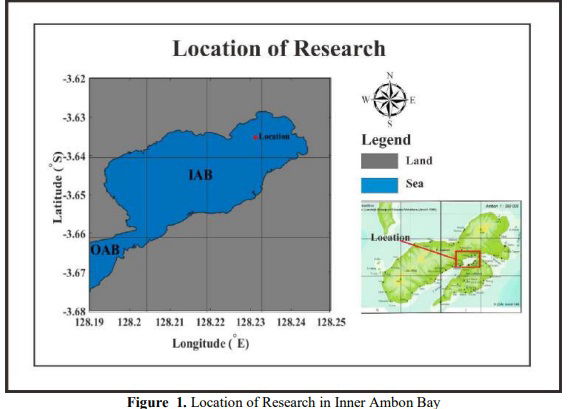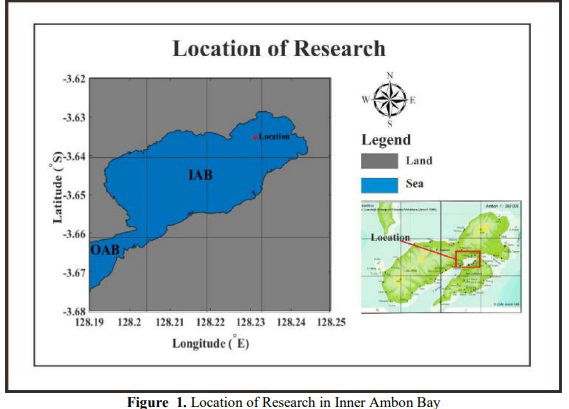Ecosystem Characteristics in Inner Ambon Bay

ABSTRACT
Inner Ambon Bay has been used as a location for fish farming. The mean seasonal of chemical parameters as much as 3,92 – 6,52 ppm for dissolved oxygen, the surface concentration of nitrate and phosphate each one is 0,05 – 0,143 ppm and 0,014 – 0,6 ppm, meanwhile the pH reach 7,95 – 8,44. The mean seasonal of physical parameters about 30,3 – 34,4 ‰ for salinity and the value of surface temperature is 26,5 – 31,5 °C. This research reviews the condition of an ecosystem in Inner Ambon Bay, consist of nutrients, phytoplankton, zooplankton, and detritus (NPZD) concentrations. The input model uses data on temperature and average nitrate concentration from Ambon Marine Aquaculture Center (Balai Perikanan Budidaya Laut Ambon) which is located on 3,63529 °S and 128,2312 °E. Model simulation is carried out for 4 years (2015 – 2018) with the time step of 6 minutes. The model simulation result shows that the mean nutrient concentration is 3,52 – 3,84 mmolC/m3 . The verification of nutrient concentration from a model with observation data (nitrate concentration) used a statistics method. The value of RMSE is 0,05 mg/L or 0,5 mmolC/m3 , meanwhile correlation is 0,41. The highest nutrient concentration occurred in the southeast season. It could be influenced by upwelling from Banda Sea that carried high nutrients from the surface.
1. Introduction
Ambon Bay devided into 2 areas namely Inner Ambon Bay (IAB) and Outer Ambon Bay (OAB). IAB has an area of 11.497,5 km2 and its basin is 40 m deep [1]. IAB is a center for fish farming conducted by the Ambon Marine Aquaculture Center (Balai Perikanan Budidaya Laut Ambon). The physical, chemical, oceanographic, and biological parameters greatly influence the yield of fish farming in IAB. Physical parameters such as temperature and salinity, chemical parameters such as dissolved oxygen, pH, nitrate, phosphate. Biological parameters such as fitoplankton and zooplankton concentration. Geographically, the condition of the waters in the western part of IAB is influenced by the phenomenon of upwelling and downwelling originating from Banda Sea, because it is close to OAB which directly connected with Banda Sea. The eastern waters of IAB are more influenced by rivers which lead to the bay. T

